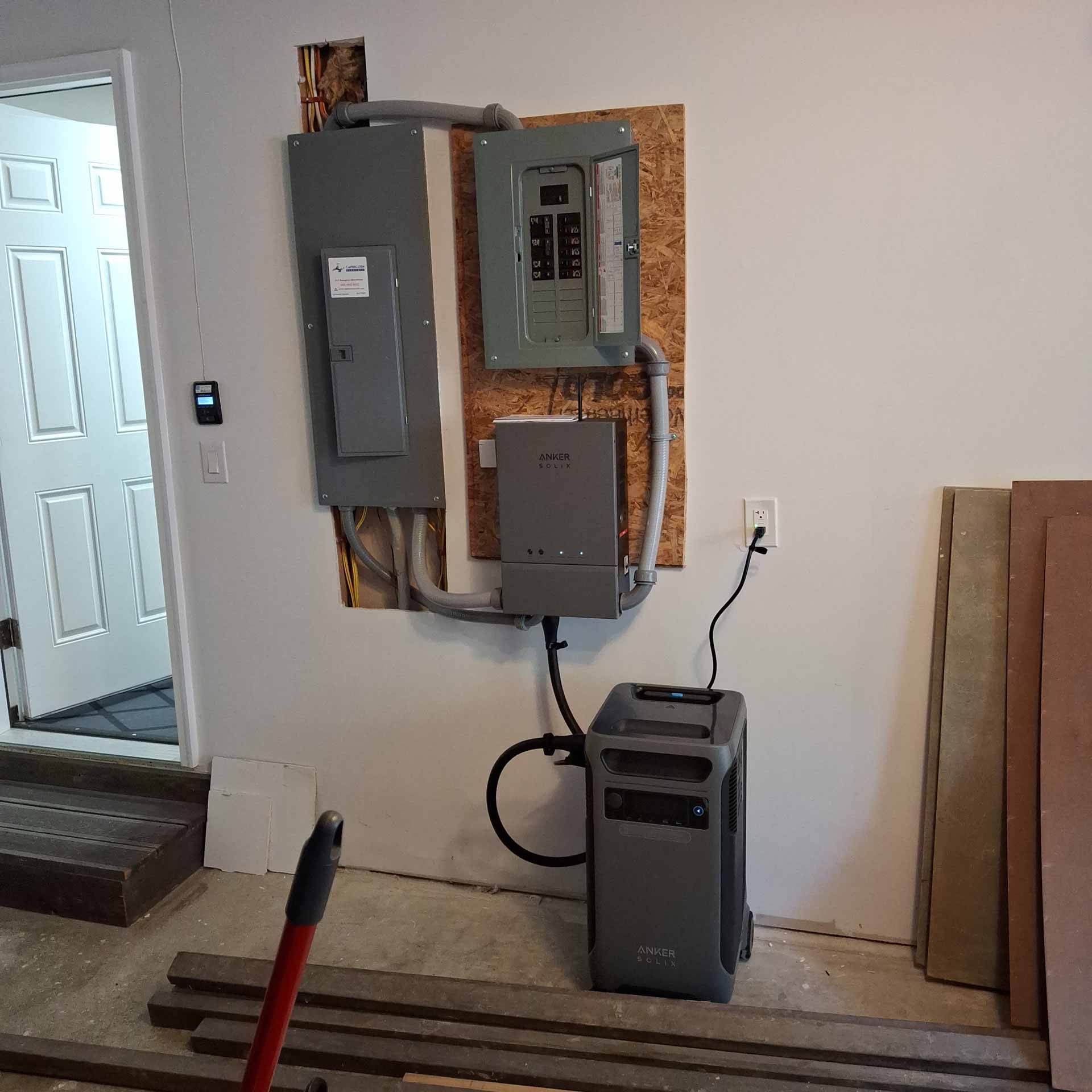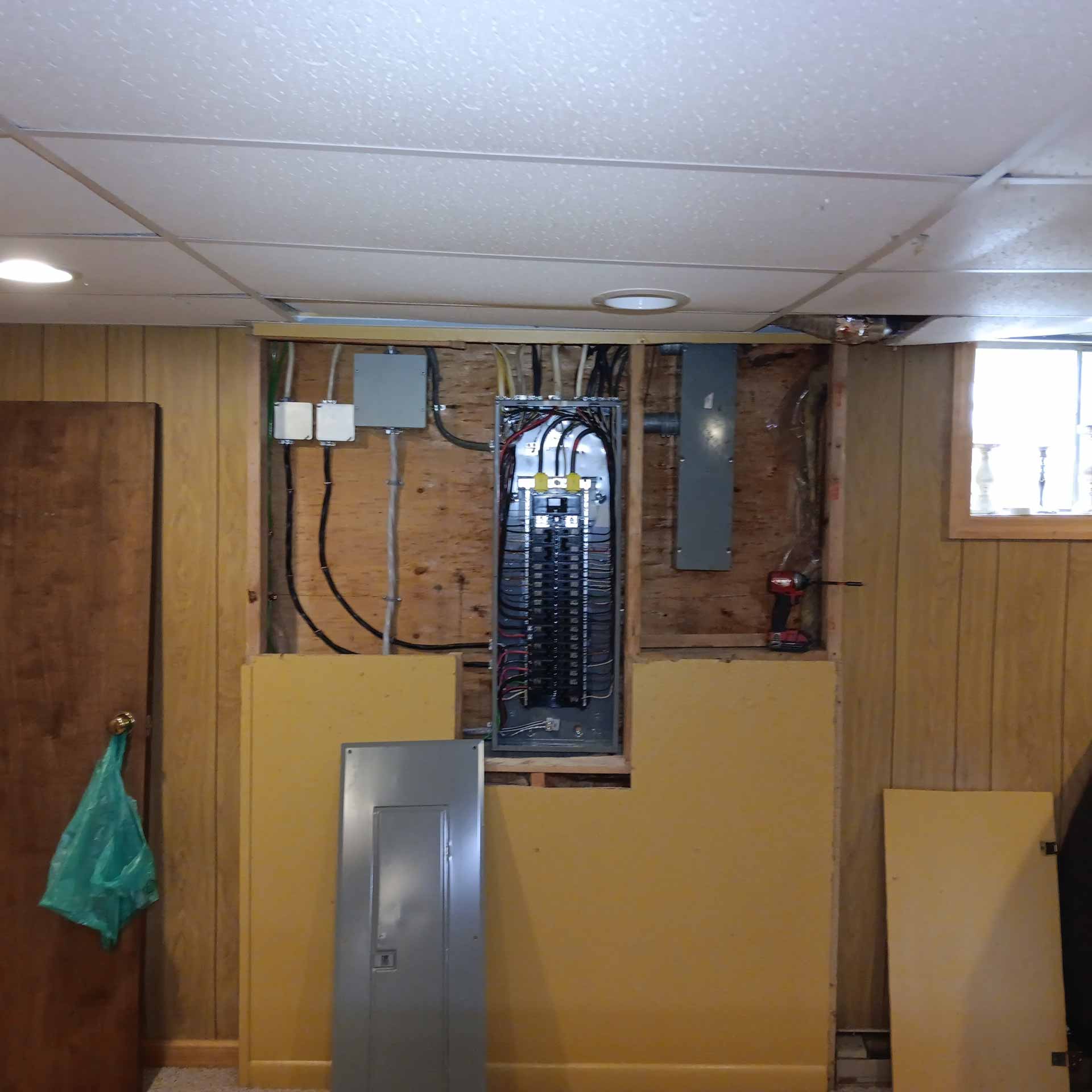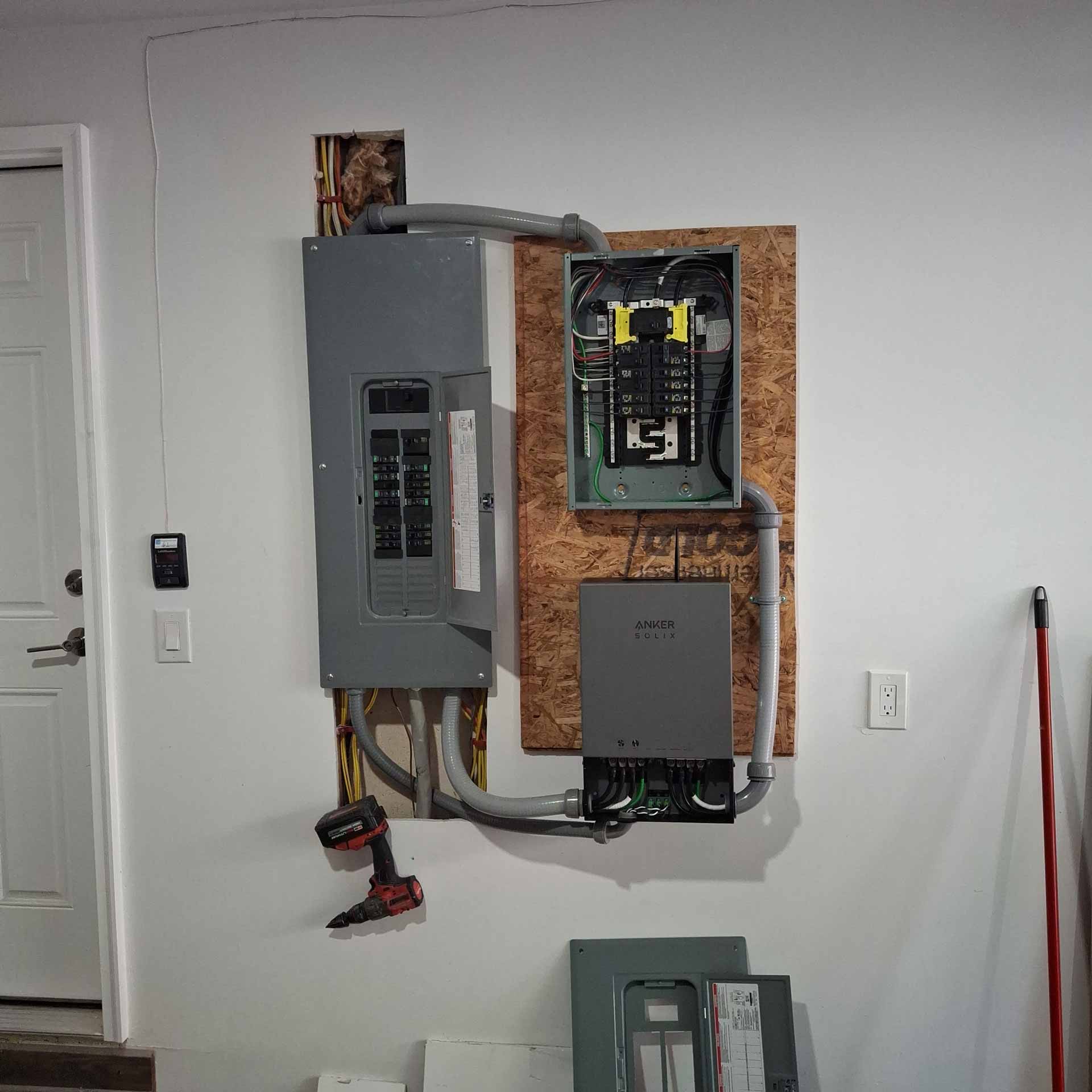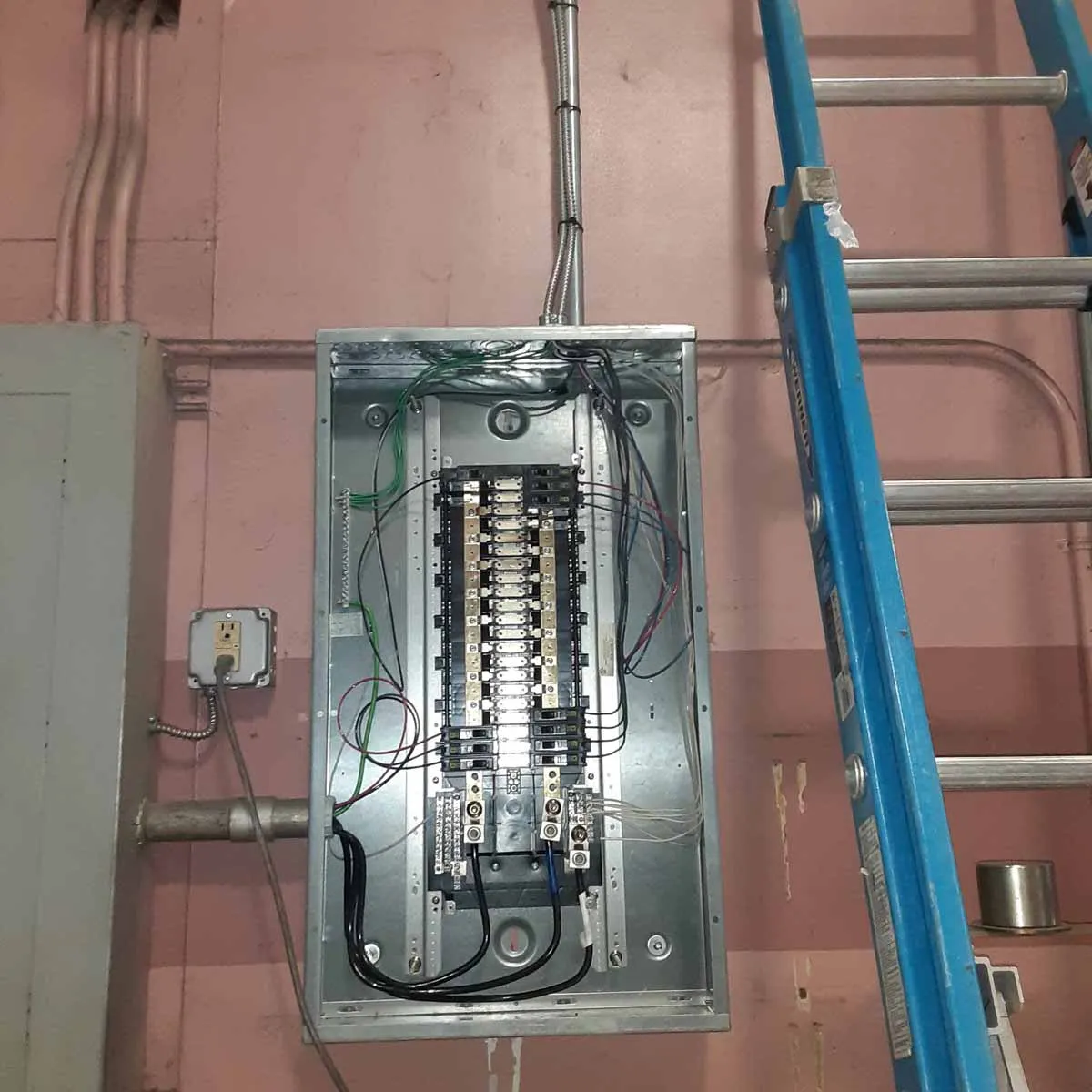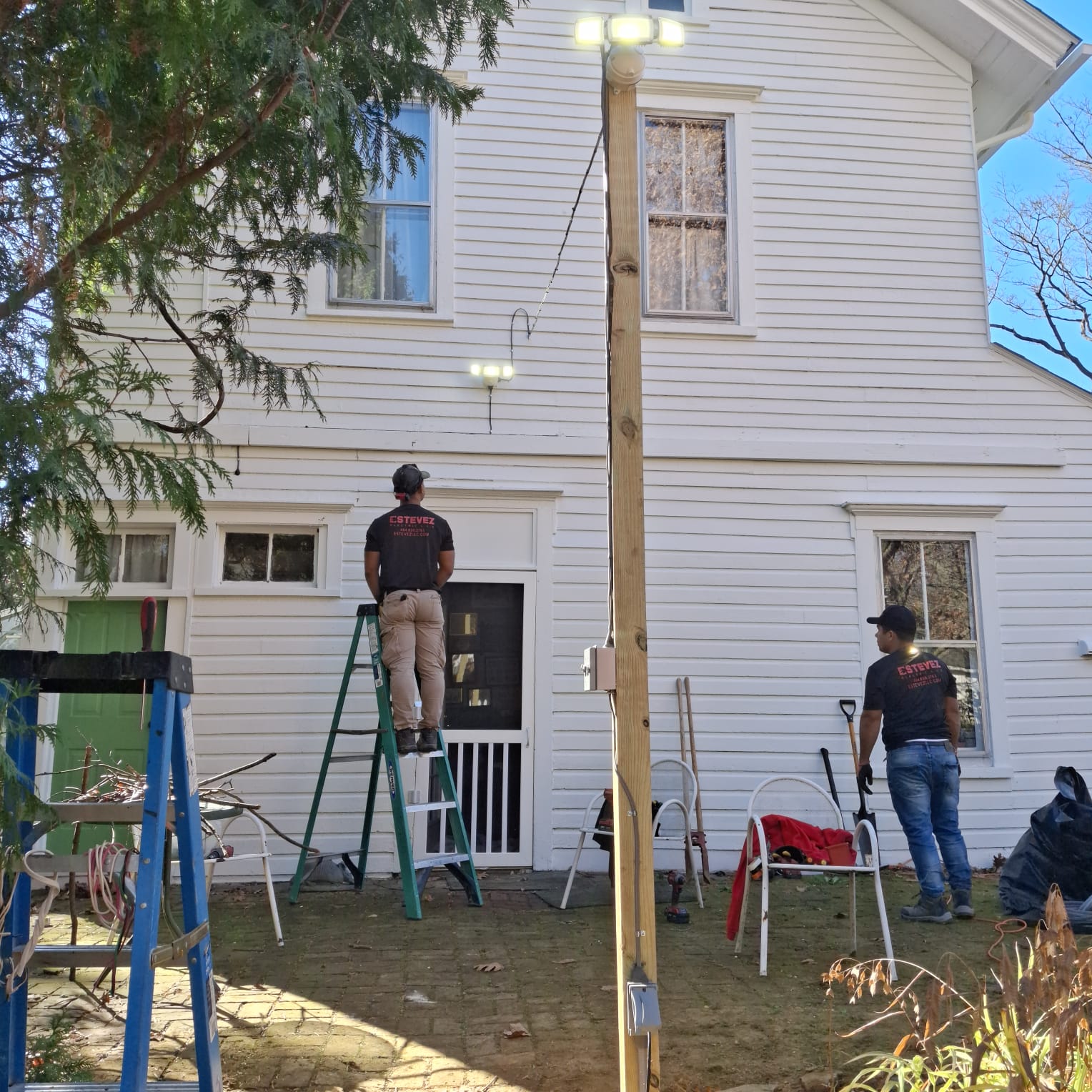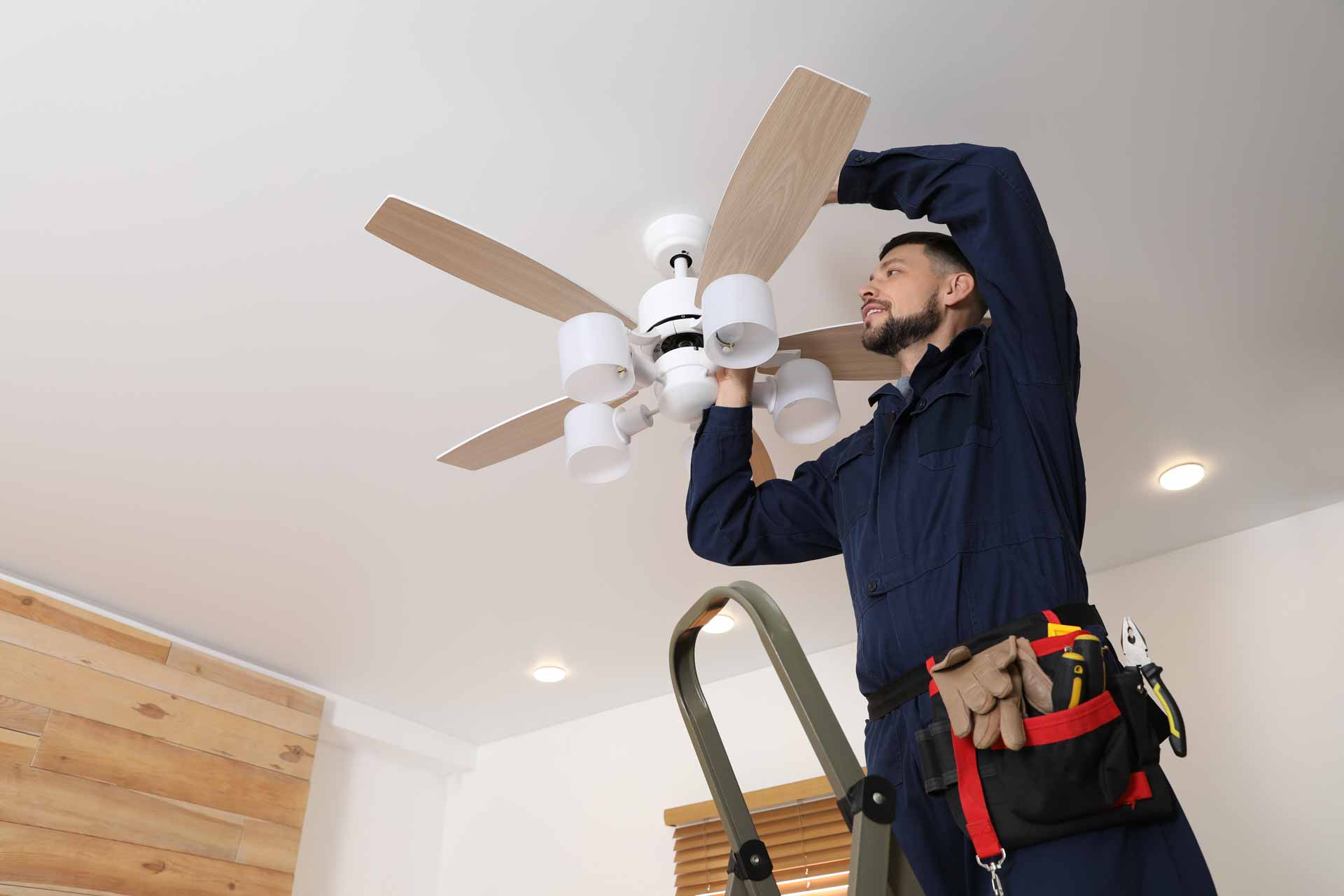Selecting the right circuit breakers for your home’s electrical system is crucial for both safety and functionality. Circuit breakers serve as the first line of defense against electrical hazards, automatically interrupting power when they detect problems such as overloads, short circuits, or ground faults. With various types, ratings, and features available in today’s market, understanding how to choose the appropriate circuit breakers can be confusing, especially for homeowners without electrical expertise. This guide will help simplify the process and provide essential tips to make informed decisions about your electrical safety, ensuring your home remains protected from potential electrical hazards.
Key Takeaways
- Circuit breaker amperage ratings must match the intended load and wire size of the circuit (15-20A for general circuits, 30-50A for appliances)
- Different breaker types serve specific purposes: standard thermal-magnetic, GFCI for wet areas, and AFCI for fire protection
- Follow the 80% loading rule to prevent overheating (a 20A circuit should carry no more than 16A continuously)
- Replace breakers showing physical damage, frequent tripping, or that are 25+ years old
- Always hire licensed electricians for circuit breaker installation to ensure safety and code compliance
- Consider advanced options like whole-house surge protection and smart circuit breakers for enhanced protection
At Estevez Electric LLC, we understand that electrical components can be confusing for homeowners. Our experienced technicians regularly get questions about circuit breaker selection, installation requirements, and safety considerations. Whether you’re upgrading your electrical panel, replacing old breakers, or planning a new installation, knowing what factors to consider will ensure your electrical system remains safe, reliable, and efficient for years to come. This guide draws from our field experience to provide you with professional insights into making the best choices for your home’s electrical protection system.
Understanding Circuit Breaker Ratings
When selecting circuit breakers, understanding their ratings is essential for ensuring they provide adequate protection for your electrical system. Circuit breaker ratings include several key specifications that determine their performance and compatibility with your home’s electrical needs. These ratings are not random numbers but carefully calculated values that ensure your electrical system operates safely within established industry standards and local electrical codes.
The amperage rating is perhaps the most important specification to consider. This rating, measured in amps, indicates the maximum continuous current the breaker can carry without tripping. For homes, common amperage ratings include 15 and 20 amps for general lighting and outlet circuits, 30 amps for devices like electric dryers, and 40-50 amps for larger appliances such as electric ranges. It’s crucial to match the amperage rating with the intended load and wire size of the circuit. Using a breaker with too high an amperage rating for a given wire size creates a dangerous fire hazard, as the wires could overheat before the breaker trips. Using a breaker with too low an amperage rating will result in annoying tripping when the circuit is operating normally.
Voltage rating is another critical factor. This indicates the maximum voltage the breaker can safely handle and interrupt in case of a fault. For homes, circuit breakers typically have voltage ratings of 120V for standard circuits and 240V for high-power appliances. Always ensure the voltage rating of your circuit breaker matches or exceeds your electrical system’s voltage. Using a breaker with an inadequate voltage rating can result in catastrophic failure during a fault condition, as the breaker may not be able to safely interrupt the current flow. Most homes in the United States operate with a 240V split-phase system, so breakers rated for at least 240V are generally required for safe operation.
The interrupting capacity, also known as the Ampere Interrupting Capacity (AIC), is a vital safety specification. It indicates the maximum fault current a breaker can safely interrupt without causing damage. Standard residential breakers typically have an AIC rating of 10,000 amps, but higher ratings may be necessary depending on your location and proximity to utility transformers. Homes located near substations or large transformers may experience higher potential fault currents and require breakers with higher AIC ratings, sometimes up to 22,000 amps or more. Your local utility company can provide information about available fault current at your service entrance, which helps determine the appropriate AIC rating needed. Choosing the right electrical panel with appropriate circuit breakers ensures your home’s electrical system can handle modern power demands while maintaining safety standards. Undersized or inadequately rated breakers might fail catastrophically during a fault, potentially causing electrical fires or other serious hazards.
Types of Circuit Breakers for Residential Use
Different types of circuit breakers offer varying levels of protection and are designed for specific applications. Understanding these differences helps you select the most appropriate breaker for your needs, ensuring optimal protection against different electrical hazards that might occur in various areas of your home. The National Electrical Code (NEC) requirements have evolved over time to require specialized breakers in specific locations, reflecting our improved understanding of electrical safety.
Standard thermal-magnetic breakers are the most common type found in residential panels. They use two mechanisms for protection: a thermal element that responds to sustained overloads by bending a bimetallic strip, and a magnetic element that provides instantaneous tripping in response to short circuits. These breakers are suitable for general-purpose circuits throughout your home. The thermal trip mechanism operates more slowly, allowing for brief current surges (like when motors start) without tripping, while responding to sustained overloads that could cause overheating. The magnetic trip mechanism responds almost instantly to short circuits, where current levels can reach dangerous levels in milliseconds. While these breakers provide basic protection, they don’t offer the specialized protection required in certain areas of your home.
Ground Fault Circuit Interrupter (GFCI) breakers protect against ground faults by monitoring the current flowing through the hot and neutral wires. If an imbalance is detected (indicating current is flowing through an unintended path, such as through water or a person), the breaker trips immediately, typically within 1/40th of a second. This rapid response can prevent serious electrical shocks and electrocution. The National Electrical Code (NEC) requires GFCI protection in areas where water is present, such as bathrooms, kitchens, outdoor outlets, and garages. GFCI protection is particularly important in these locations because water significantly increases the risk of electrical shock. While GFCI protection can be provided either through GFCI outlets or GFCI breakers, using a GFCI breaker provides protection for the entire circuit, including the wiring within the walls, offering more complete protection than individual GFCI outlets.
Arc Fault Circuit Interrupter (AFCI) breakers detect dangerous arc faults that can cause electrical fires. Unlike standard breakers that only respond to overloads and short circuits, AFCI breakers can detect and respond to arcing conditions that might otherwise go unnoticed. These smart devices use advanced electronic circuitry to analyze the electrical signature of the current flow, distinguishing between normal arcs (like those created when a switch is turned on) and dangerous arcs that can occur due to damaged wiring, loose connections, or worn insulation. The NEC now requires AFCI breakers in most living areas of homes, including bedrooms, living rooms, and hallways. This requirement has expanded with each code update as the effectiveness of AFCI technology in preventing electrical fires has been proven. Many newer homes now use combination AFCI/GFCI breakers that provide protection against both arc faults and ground faults, offering complete protection in a single device.
Matching Circuit Breakers to Your Electrical Needs
Selecting the right circuit breakers requires careful consideration of your specific electrical needs and the demands of your household appliances and devices. Before choosing circuit breakers, it’s essential to assess your home’s electrical load requirements by calculating the total power needs of all appliances and devices, determining which circuits will carry high loads, and planning for future electrical needs. This assessment should include both continuous loads (devices that run for hours at a time) and intermittent loads (devices used briefly), as well as startup loads for motors and compressors, which can briefly draw several times their normal operating current.
High-power appliances require dedicated circuits with appropriately sized breakers to operate safely and efficiently. For example, electric ranges and ovens typically need a 40-50 amp, double-pole breaker, while electric clothes dryers usually require a 30 amp, double-pole breaker. Electric water heaters often need a 30 amp, double-pole breaker, and central air conditioners may require 20-60 amp, double-pole breakers depending on their size. These double-pole breakers connect to both hot buses in your electrical panel, providing 240 volts for these high-power appliances. It’s important to check the manufacturer’s specifications for each appliance to determine the exact circuit requirements, as using an undersized circuit can lead to annoying tripping, while an oversized circuit might not provide adequate protection against overloads. Additionally, the wire gauge must be matched to the breaker size—for instance, a 30-amp circuit requires 10-gauge wire, while a 50-amp circuit needs 6-gauge wire at minimum.
It’s also important to consider the 80% rule when selecting circuit breakers. This guideline states that circuit breakers should not be loaded beyond 80% of their rated capacity for extended periods (over 3 hours) to prevent overheating. For example, a 20-amp circuit should not carry more than 16 amps continuously. This rule is actually written in the National Electrical Code (NEC) and exists because circuit breakers generate heat during normal operation, and this heat increases as the current approaches the breaker’s rating. Operating at or near 100% capacity for extended periods can cause early breaker failure or annoying tripping as the breaker heats up. For circuits that will power continuous loads, such as HVAC equipment or commercial lighting, the NEC often requires that these circuits be sized at 125% of the continuous load (which is mathematically the same as the 80% rule). Upgrading your electrical panel may be necessary if you’re adding new high-power appliances or experiencing frequent circuit breaker trips, especially in older homes with 100-amp service that may be too small for modern electrical demands.
Signs You Need to Replace Your Circuit Breakers
Circuit breakers are designed to last many years, but they don’t last forever. Recognizing the signs that indicate it’s time to replace your circuit breakers is crucial for maintaining electrical safety in your home. Physical signs that suggest your circuit breakers need replacement include visible damage like scorch marks, melting, or discoloration; burning smells coming from the electrical panel; breakers that feel hot to the touch; rust or corrosion on breaker connections; and breakers that won’t stay reset or are difficult to switch. These physical signs often indicate internal damage to the breaker’s mechanisms or deterioration of the materials, compromising the breaker’s ability to work properly. Even without visible external damage, internal components can wear out over time due to repeated heating and cooling cycles, mechanical stress from tripping, and environmental factors like humidity and dust buildup.
Functional issues can also indicate the need for replacement. While occasional tripping is normal, frequent tripping on the same circuit without overloading indicates a potential breaker failure. More dangerous than frequent tripping is a breaker that fails to trip when it should, as this eliminates your protection against overloads. This dangerous condition can occur as breakers age and their internal mechanisms become less responsive. Flickering or dimming lights, when not caused by loose connections, can indicate breaker issues that affect power delivery. These symptoms might suggest that the breaker is not maintaining consistent contact or is sometimes failing under load. Additionally, the age of your breakers is an important factor to consider, as circuit breakers typically last 25-40 years, but environmental factors and usage patterns can shorten this lifespan. Homes built before the 1990s may have older breaker technologies that lack modern safety features and testing standards. Federal Pacific Electric (FPE) panels with Stab-Lok breakers, for example, have been identified as potential fire hazards and should be replaced regardless of their apparent condition.
Professional circuit breaker replacement is essential to ensure your electrical system remains safe and reliable. When you notice any of these warning signs, it’s important to contact a licensed electrician to evaluate your electrical panel and recommend appropriate replacements. Professional electricians can perform specialized tests to verify breaker functionality, including trip curve testing, insulation resistance measurements, and contact resistance checks that aren’t possible with visual inspection alone. They can also identify potential compatibility issues with replacement breakers, as not all breakers are interchangeable between different panel manufacturers or even between different models from the same manufacturer.
The Importance of Professional Installation
While DIY projects can be fun, circuit breaker installation and replacement should be left to qualified professionals due to the significant safety risks involved. Working with your home’s electrical panel involves several serious risks, including exposure to live electrical components carrying dangerous voltage, potential for electrical shock, burns, or electrocution, risk of improper installation leading to fire hazards, and the possibility of damaging expensive electrical equipment. Even when the main breaker is turned off, the service terminals at the top of the panel remain energized with the full utility voltage, presenting a serious electrocution hazard. Professional electricians are trained to work safely around these hazards, using specialized insulated tools, protective equipment, and proper lockout/tagout procedures to ensure safety.
Professional electricians ensure that all work complies with local electrical codes and obtain necessary permits. They understand the National Electrical Code (NEC) requirements for circuit breaker installation, ensure local building code compliance, provide proper documentation for insurance purposes, and arrange for inspections by local authorities when required. The NEC is updated every three years, and local areas may adopt additional requirements or amendments. These codes specify critical details such as appropriate wire sizes, connection methods, torque specifications for terminal connections, and requirements for AFCI and GFCI protection in specific locations. Improper installation that doesn’t meet code requirements not only creates safety hazards but can also lead to insurance problems if an electrical fire occurs. Licensed electricians have the training, tools, and expertise to safely install or replace circuit breakers while ensuring all work meets applicable codes and standards. They also understand the specific requirements of different panel manufacturers, as breaker installation procedures and compatibility can vary significantly between brands like Square D, Eaton, Siemens, and General Electric.
Advanced Protection Features to Consider
Modern circuit breakers offer advanced features that provide enhanced protection for your electrical system and connected devices. Surge protection at the breaker level provides whole-house defense against voltage spikes that can damage sensitive electronics. Unlike plug-in surge protectors, whole-house surge protection protects all circuits at once, has a longer lifespan, and provides protection against both external surges (like lightning) and internal surges (from appliances). These whole-house surge protective devices (SPDs) are typically installed at the electrical panel and can absorb surges of tens of thousands of amps, far exceeding the capacity of most plug-in surge protectors. They also provide protection for hardwired appliances that can’t be connected to plug-in surge protectors, such as HVAC systems, water heaters, and built-in appliances. The latest NEC editions have begun requiring surge protection in new homes, recognizing its importance in protecting modern homes filled with sensitive electronics.
Whole-house surge protection is increasingly important as homes contain more sensitive electronic devices and appliances with circuit boards. Modern appliances like refrigerators, washing machines, and HVAC systems now contain sophisticated control boards that can be damaged by even minor power surges. Smart circuit breakers represent the next evolution in electrical protection, offering features like remote monitoring and control via smartphone apps, real-time energy usage tracking by circuit, automatic notifications when a breaker trips, integration with home automation systems, and historical data for identifying patterns and potential issues. These smart systems can help identify energy-wasting appliances, detect abnormal power consumption patterns that might indicate equipment problems, and allow remote power management when you’re away from home. Some advanced systems can even predict potential failures based on changes in electrical patterns before a problem becomes serious enough to trip a breaker. While these smart systems cost more initially, they provide unprecedented visibility into your home’s electrical system and can help prevent costly damage or identify energy-saving opportunities.
Maintaining Your Circuit Breakers
Proper maintenance of your circuit breakers extends their lifespan and ensures they continue to provide reliable protection for your electrical system. Periodic testing and visual inspection of your circuit breakers helps identify potential issues before they become serious problems. This includes visual inspection for signs of damage, overheating, or corrosion; testing the manual operation of breakers (with caution and proper procedures); checking for loose connections at breaker terminals; and cleaning dust and debris from the electrical panel (professionally). Regular maintenance is particularly important for specialized breakers like GFCIs and AFCIs, which have sensitive electronic components that need to function correctly to provide their intended protection. The test buttons on these breakers should be used regularly to verify that their protective functions are working properly. Manufacturers typically recommend testing GFCI and AFCI breakers monthly, though testing them every three months is often considered enough for homes.
Setting up a regular maintenance schedule with a professional electrician ensures your electrical system remains in good condition. This should include yearly inspection of your electrical panel and circuit breakers, testing of GFCI and AFCI breakers every 1-3 months (which you can do yourself), complete electrical system inspection every 3-5 years, and extra inspections after major electrical events like lightning strikes or power surges. Professional inspections can identify issues that might not be obvious to homeowners, such as loose connections that can cause overheating, wearing insulation on internal panel wiring, or early signs of breaker failure. Electricians can also use thermal imaging cameras to identify hot spots in the panel that might indicate overloaded circuits or poor connections before they become fire hazards. Following manufacturer maintenance recommendations is particularly important for specialized equipment like generator transfer switches, surge protectors, or smart electrical systems, which may have specific maintenance requirements to maintain their warranty coverage and ensure proper operation during emergencies.
Conclusion
Choosing the right circuit breakers is a critical decision that directly impacts the safety and functionality of your home’s electrical system. By understanding the different types of circuit breakers, their ratings, and the specific needs of your home, you can make informed decisions that provide optimal protection for your family and property. The evolution of circuit breaker technology has significantly improved electrical safety over the decades, with specialized breakers like AFCIs and GFCIs addressing specific hazards that standard breakers cannot detect. As homes continue to incorporate more electronic devices and appliances, having the appropriate circuit protection becomes increasingly important for preventing damage from overloads, short circuits, and power surges.
Remember that while this guide provides valuable information, electrical work involving circuit breakers should be performed by licensed professionals who have the training, tools, and expertise to ensure safe and code-compliant installations. Electrical systems are complex and potentially dangerous, and mistakes can lead to serious safety hazards, property damage, or code violations that might affect insurance coverage. At Estevez Electric LLC, we’re committed to helping homeowners understand their electrical systems and make safe choices. Our team of licensed electricians stays current with the latest electrical codes, safety standards, and product developments to provide you with the most up-to-date recommendations and solutions for your home’s electrical needs. For professional circuit breaker installation, replacement, or maintenance, contact us today to schedule a consultation with one of our experienced electricians.


